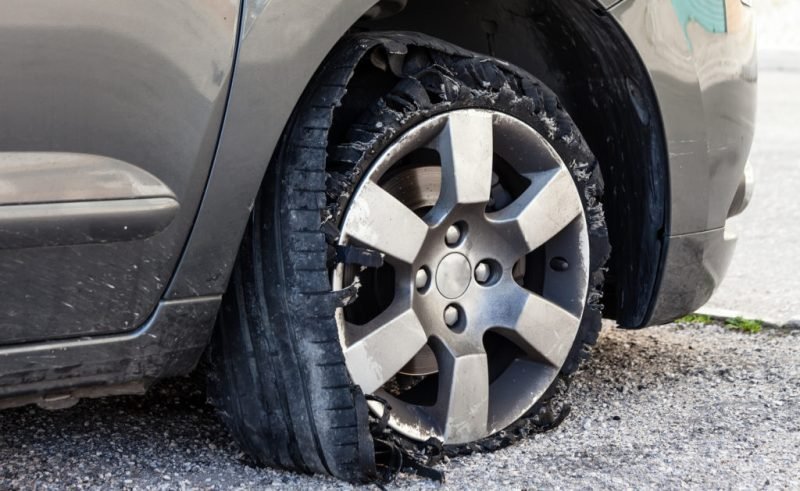
Everything You Should Know About a Tire Blowout
There are plenty of things that can go wrong when you’re behind the wheel, but one of the most dreaded can be the tire blowout. According to the National Highway Traffic Safety Administration (NHTSA), there were 738 deaths in the United States related to tire accidents in 2017.
Tire blowout related accidents can be especially deadly because there is the risk of collision that can occur, and it can also cause your car or other vehicles to go off into other lanes of traffic or off the road altogether.
Knowing what to do and how to handle a tire blowout is an important part of keeping yourself and others safe if you do face this situation. For example, when you experience a tire blowout, you should let the vehicle decelerate while gradually steering it to a safe place.
There’s more to it than that when it comes to staying safe during a blowout, and the following are some things you should know.
What Happens During a Tire Blowout?

As the name implies, when you have a tire blowout, it leads to part of your tire exploding, and then there’s a hole in your tire. The tire loses pressure and deflates quickly.
Certain things can make it more likely that you’ll experience a tire blowout including:
Not properly maintaining your tires: if you don’t rotate your tires regularly and replace them as needed, you’re at a greater risk of a blowout. When you get your tires rotated regularly, it helps make sure the wear and tear are distributed evenly across tires. In addition to rotation, get in the habit of inspecting your tires regularly to ensure they’re thick enough and not overly worn out.
Underinflation: Every tire has a point that’s considered ideal air pressure, and federal law requires a pressure monitoring system to be installed on all vehicles since 2007. If you’re ignoring that underinflation alarm, don’t. Underinflation is one of the main reasons blowouts occur. When your tire is underinflated, it’s more likely to overheat, causing the problem.
Overinflation: Overinflation can also be a contributor to a tire blowout. With overinflation, your tires wear out faster and more unevenly than they typically would.
Wrong tire type: Not all tires are going to fit all vehicles. When you replace your tires, you need to make sure you get the right type and fit.
Heavy loads: If you’re carrying more in your vehicle than it’s equipped to handle, your tire could blow out.
Other issues are slow leaks, tires that are defective, and hot weather.
What Should You Do in the Event of a Blowout?

Knowing you’re experiencing a tire blowout can be extremely scary.
The most important thing is to try and remain as calm as possible. If you panic, it’s going to make it more likely you do something that will make the situation worse.
Initially, right when you realize your tire blows out, don’t do anything. Don’t brake, don’t turn the wheel, don’t take your foot off the gas or anything else. Anything you do could cause you to lose control of your car, and then you might spin out.
Steer straight because you’ll feel your car go to one side. Hold onto the steering wheel tightly at 10 and 2 and don’t succumb to the urge to overcorrect.
Keep going straight and very gently press the gas pedal. You will want to brake, but that’s probably the worst thing you can do.
By pressing the gas pedal gently, you can regain control of the vehicle because it helps you maintain your momentum forward. Then, when you have control, slowly let off the gas.
Let your car slow itself down naturally, and turn on your emergency lights because you’re going to be decelerating your speed quickly. Continue to try and keep the vehicle straight and don’t turn your wheel.
Once you’re at a speed that’s below 30 mph, you can very gently brake. Once you’re going very slow—maybe around 20 mph, turn slowly to guide your vehicle off the road. Then, you can call for help.
While a tire blowout can happen anytime, there’s actually a season it’s more common. From May to early October, most tires fail because the temperature is the hottest. That’s also when people are driving more, and their vehicles may be more loaded down.
Tire blowouts tend to happen in the warmest parts of the country, most often in general.
Be proactive in your tire maintenance, but also know what to do if you do encounter a scary blowout.




